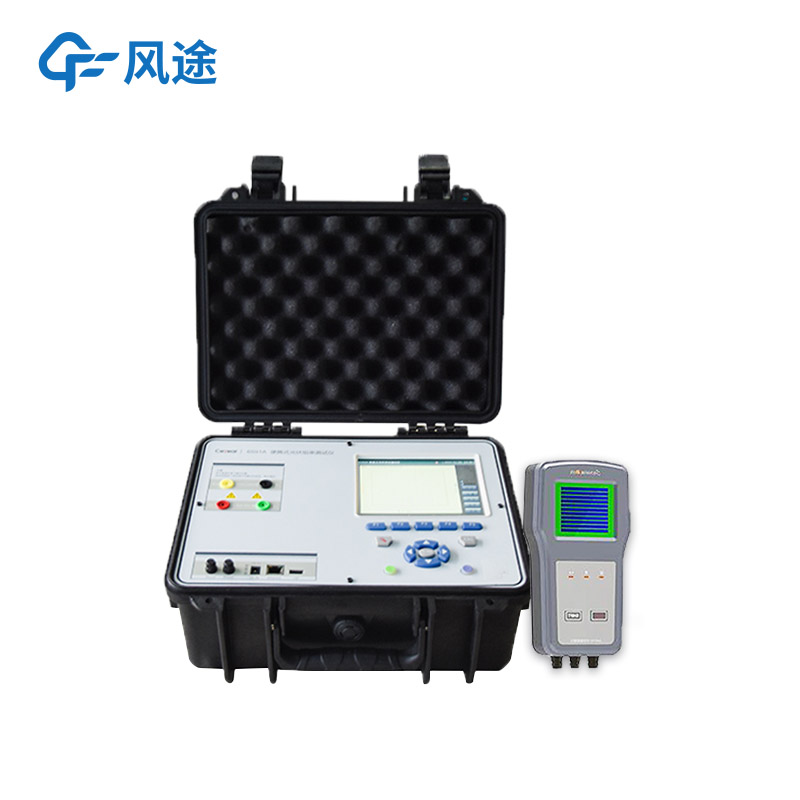Tianyi Sensor IOT Technology Co., Ltd
Sales Manager:Ms. Emily Wang
Cel,Whatsapp,Wechat:+86 15898932201
Email:info@fengtutec.com
Add:No. 155 Optoelectronic Industry Accelerator, Gaoxin District, Weifang, Shandong, China

Sales Manager:Ms. Emily Wang
Cel,Whatsapp,Wechat:+86 15898932201
Email:info@fengtutec.com
Add:No. 155 Optoelectronic Industry Accelerator, Gaoxin District, Weifang, Shandong, China
time:2025-10-11 08:54:49 source:Weather Station viewed:125 time
In the photovoltaic field, the I-V Curve Tracer is a core device used to measure and evaluate the electrical performance of solar cells and modules. The "IV" in its name stands for Current-Voltage. This instrument accurately plots the volt-ampere characteristic curve of the measured object by applying a scanning voltage and simultaneously measuring the current. This curve intuitively demonstrates the output characteristics of photovoltaic devices throughout the entire operating range from open circuit to short circuit, serving as a direct basis for judging their quality and performance.
By analyzing this characteristic curve, key performance parameters that determine the power generation capability of solar modules can be directly obtained. These mainly include: open circuit voltage, which is the maximum output voltage of the module under no-load conditions; short circuit current, which is the maximum output current when the module's output terminals are short-circuited; maximum power point, which is the voltage and current operating point where the module can output maximum power; fill factor, an indicator reflecting the "squareness" of the module's output characteristics and an important factor for measuring its output efficiency; and finally the core indicator - photoelectric conversion efficiency.
In photovoltaic manufacturing plants, the I-V Curve Tracer is an essential piece of equipment at the end of the production line, used for 100% inspection and power grading of every solar module leaving the factory to ensure its nominal power meets specified levels. It is equally crucial in the construction and operation of photovoltaic power stations. Before power station installation, the I-V Curve Tracer can be used for incoming inspection of modules to check for hidden cracks or damage caused during transportation. When a power station system experiences abnormal power generation, operation and maintenance personnel use the I-V Curve Tracer to test problematic strings or individual modules. By analyzing the abnormal shape of their characteristic curves, common faults can be effectively diagnosed, such as current mismatch caused by hidden cracks or fragments, power attenuation due to hot spot effects, and internal connection problems or bypass diode failures.
Therefore, from laboratory research and development, production line quality inspection to power station field operation and maintenance, the I-V Curve Tracer runs through all aspects of the photovoltaic industry, providing irreplaceable technical support for product performance verification, quality control, and fault diagnosis.

Entering the high - standard farmland demonstration area, 25 newly installed Solar insecticidal lamps are neatly arranged in the fields. These devices consist of silver lamp poles, black solar panels, and green lamp housings. They absorb solar energy and store electricity during the day, and at nigh...
In the efforts to tackle air pollution, the precise identification of pollution sources is a core prerequisite for formulating effective response measures. Traditional manual analysis is time-consuming and susceptible to interference from various external factors, leading to deviations in pollution...
Have you ever wondered why the air feels especially fresh near forests and waterfalls? This is due to the difference in negative oxygen ion content in the air. Now, TianYi's FT-FY1 Negative Ion Detector makes this "freshness" measurable and quantifiable, providing accurate data support...
Explosion - proof weather stations are meteorological monitoring devices specifically designed to operate in hazardous environments. With the development of industries such as manufacturing, military, and chemical, the demand for explosion - proof weather stations has been growing steadily. The main...